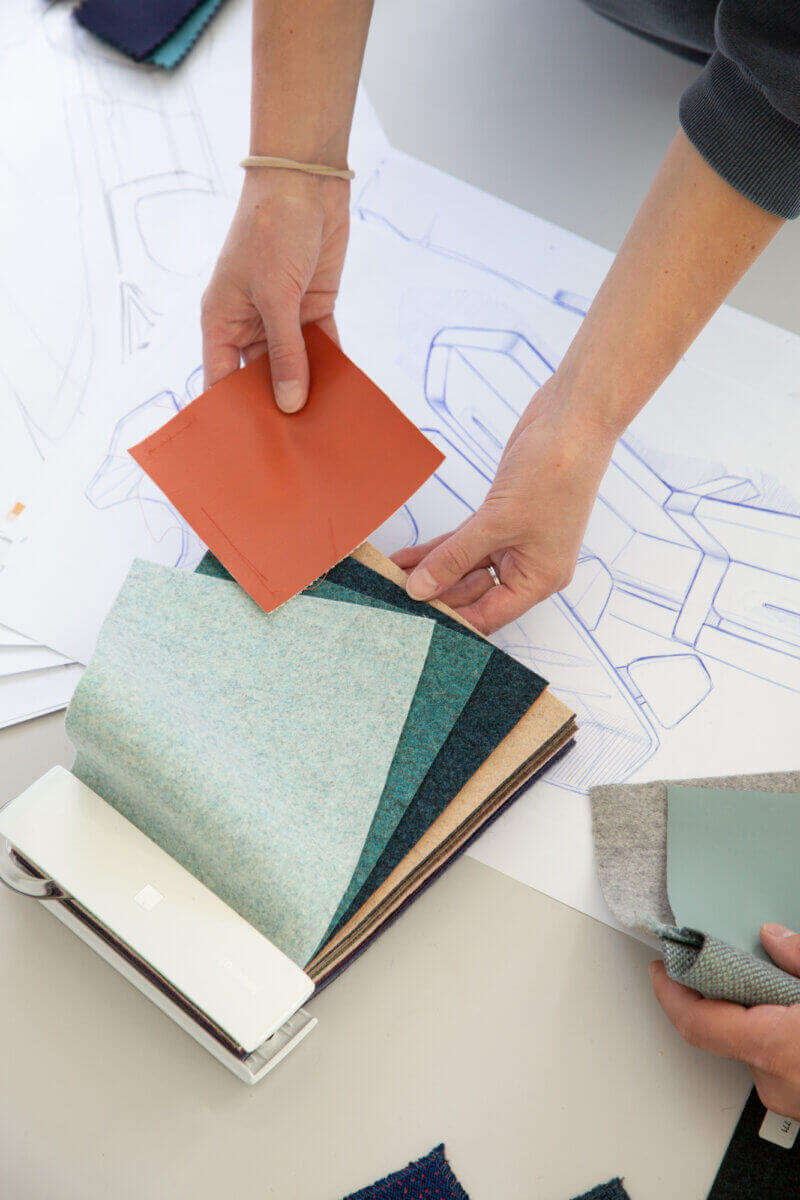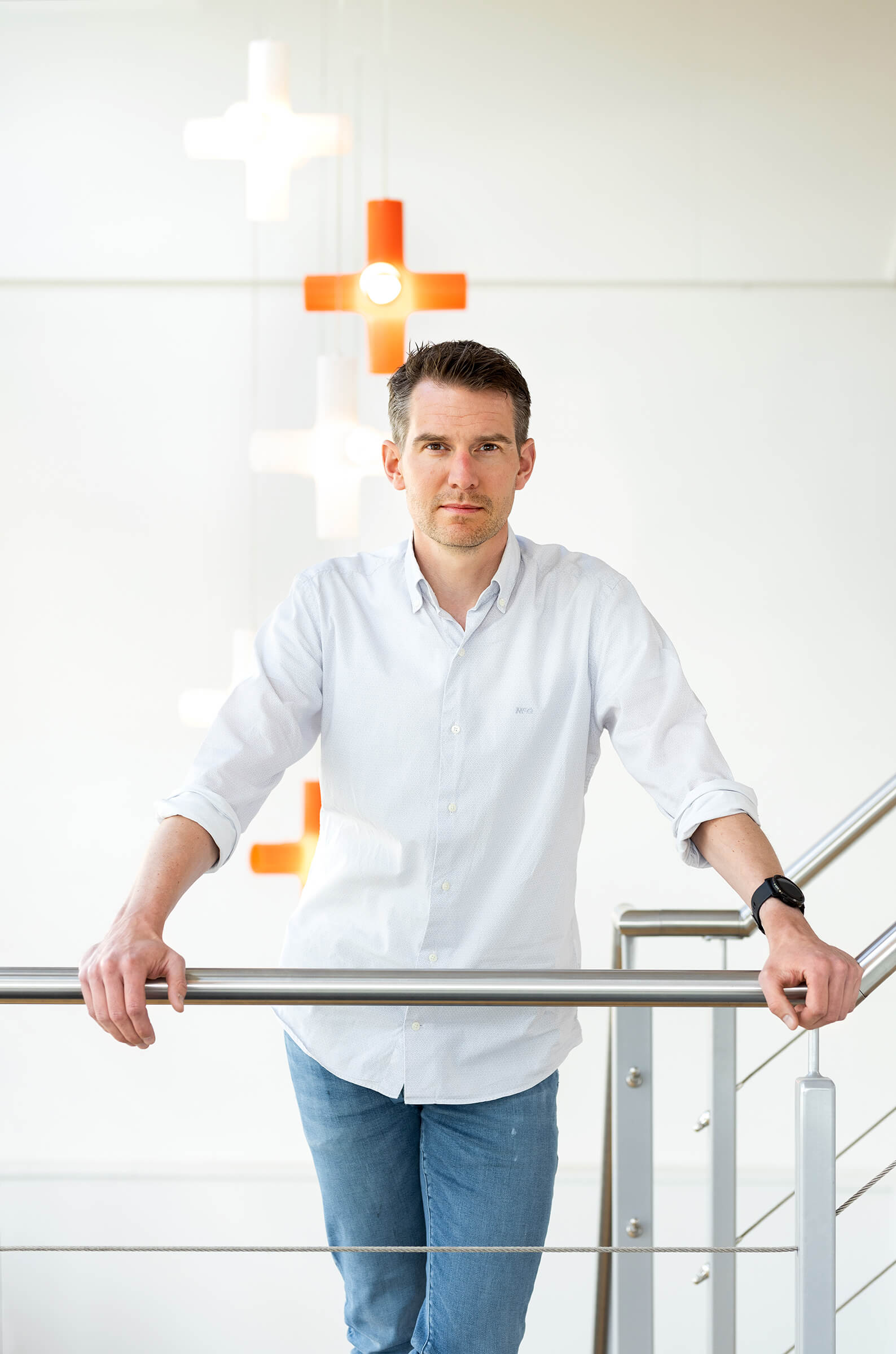Innovating health through design

Health, designed, here's why
“In today’s society, people are increasingly focused on achieving a healthy lifestyle. The growing availability of both tangible and intangible solutions has inspired us to bring our expertise in user experience to this market segment. Leveraging our extensive knowledge from the mobility sector, we are well-positioned to develop innovative products that enhance and improve people’s lives.
As more individuals prioritize a healthy lifestyle, the market has seen a surge in supportive products and solutions. This trend has encouraged us to apply our knowledge of user experience to this emerging segment.
Drawing on our expertise gained in the mobility industry, we are committed to creating forward-thinking products that help people lead healthier, more fulfilling lives.”
Gert Jan Van Breugel, Managing Director

A Design Process for Better Health Outcomes
Directioning
We begin by finding the right balance. By analyzing the context through the lenses of Market, User, Technology and the Earth, we explore future possibilities and set a clear course.
Digging
We dig deep into user behaviors, clinical workflows, and regulatory landscapes to uncover what truly matters—both emotionally and practically.
Defining
We translate insights into focused, actionable design opportunities that align with user needs, healthcare requirements, and strategic goals.
Developing
Through rapid prototyping and iteration, we build and refine solutions that are intuitive, accessible, and grounded in real-world use.
Delivering
From final CAD to CMF and production handover, we ensure every detail meets health standards—and holds up in the hands of real users.

Evolving Lifestyles, Smarter Products
Increasing focus on sustainability
Our knowledge of materials and production processes enables us to advise in making these choices.
Growing focus on home health and self-diagnosis
We stay informed about consumer trends in self-monitoring and preventive healthcare.
More wearables and other monitoring devices
We can develop smart products that help people live healthier lives.
More people are living longer
Products need to last longer or be usable across multiple age groups.

Designing the future of health, together
At Modyn, we help bring innovative health-tech and well-being products to life; faster, smarter, and with real impact. From connected devices to lifestyle-focused health solutions, our approach is built around what matters most: the people who use them.
We combine rapid prototyping and agile development with deep collaboration, working closely with users, experts and other stakeholders to create products that truly fit into daily life. Our designs prioritize intuitive experiences, seamlessly integrating with digital ecosystems.
Whether you’re launching a wearable, a smart diagnostic tool, or a next-generation fitness device, we design for modularity, scalability, and adoption—so your solution is ready to grow with the market.
Let’s shape the future of health together.

Designing wearables: where health meets human behaviour
Wearable health devices have become essential tools for better well-being—tracking everything from heart rate and sleep to glucose and stress levels. However, designing wearables that people use daily involves more than sensor accuracy.
The biggest challenge? Blending technology with human behavior. A wearable must be comfortable, discreet, and intuitive—all while housing advanced electronics. Materials need to be skin-friendly and durable. Battery life must support continuous use without frequent charging. And data must be presented clearly to drive real insights, not overwhelm.
Designers also face the challenge of diverse users: different wrist sizes, skin tones, accessibility needs, and lifestyle expectations. Cultural sensitivity plays a growing role, too—what feels sleek in one market may feel intrusive in another. Ultimately, wearables are at their best when they disappear into daily life—functioning as a natural extension of the body. That’s where smart design, deep empathy, and rigorous testing come together to create lasting impact.

Smart fitness: designing for performance and motivation
The modern fitness center is evolving into a high-tech environment, filled with smart equipment that tracks movement, offers real-time feedback, and connects users to apps or personal data. Developing these devices isn’t just about performance but engagement, durability, and inclusivity.
One major challenge is creating intuitive user experiences. People of all fitness levels use the same machines, so controls and feedback systems must be easy to understand, even for beginners. Touchscreens, sensors, and app integrations need to work seamlessly without interrupting the workout.
Another key factor is durability. Fitness equipment endures heavy use in tough environments—sweat, vibration, and repetitive motion can all impact performance. Materials, construction, and internal tech must be built to last.
Finally, the best devices are motivational. Whether it’s gamification, personal goal tracking, or group leaderboard features, well-designed systems help users stay consistent and improve over time.
In short, fitness technology is no longer just about reps and sets, it’s about smarter, more connected experiences that keep people coming back.

Health at home: designing for remote monitoring and diagnostics
Remote monitoring and at-home diagnostics are changing the way we think about healthcare. From blood pressure cuffs to smart glucose monitors and mail-in lab tests, these tools give people more control over their health—without visiting a clinic. But with that shift comes a new set of design challenges.
First, these products must be incredibly easy to use. Many users aren’t medically trained, so instructions, interfaces, and the testing process must be clear and fail-safe. Good design can help reduce errors and anxiety.
Second, they need to be trustworthy and accurate. A device used at home has to deliver clinical-grade results. That means robust engineering, reliable sensors, and seamless integration with digital health platforms.
Finally, there’s the challenge of privacy and connectivity. These tools collect sensitive data that needs to be securely stored and transmitted. They also need to work in a range of environments, from tech-savvy households to rural areas with limited internet access.
The future of healthcare is more personal and decentralized—and good design is key to making it work for everyone.

Designing for freedom
The modern mobility product is evolving—no longer just a clinical aid, but a thoughtfully designed tool that supports independence, confidence, and an active lifestyle.
Today’s users expect more. They want products that fit seamlessly into their lives, enabling them to move freely, stay engaged, and express their identity—without compromise or stigma. That means every detail matters: from the ergonomics of a handle to the fluid motion of folding mechanisms.
Comfort and ease of use are essential. Mobility solutions must be intuitive and supportive, designed for a wide range of abilities and body types. Whether it’s a walker, scooter, or daily-use aid, products should feel natural to operate—minimizing strain and maximizing confidence.
Durability and reliability are just as critical. These products are part of people’s daily routines, often relied on in public spaces, on uneven terrain, or over long distances. That demands smart material choices, robust engineering, and real-world testing.
And importantly, design plays a psychological role. Products that look and feel empowering—not medical—help users feel seen, not singled out. Sleek lines, lifestyle-driven aesthetics, and customization options can shift perception and improve adoption.
In short, mobility design today is about more than support—it’s about dignity, freedom, and making every move count.
